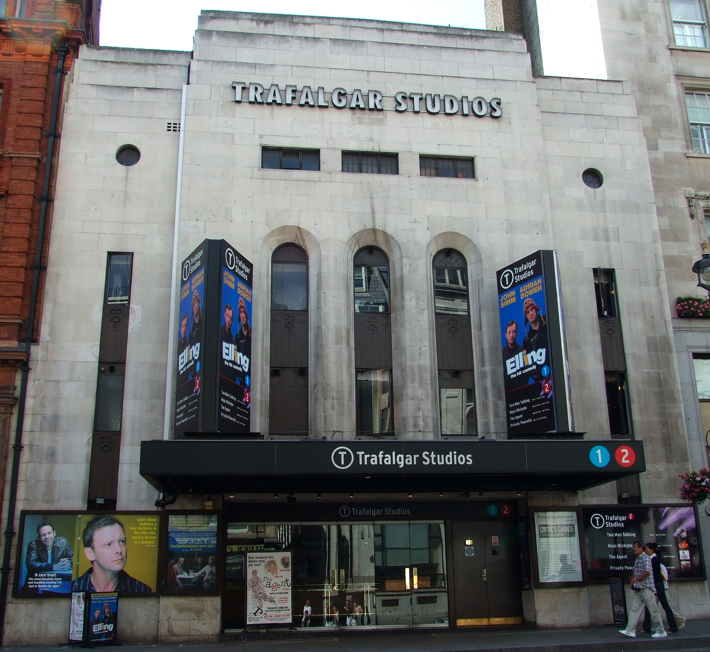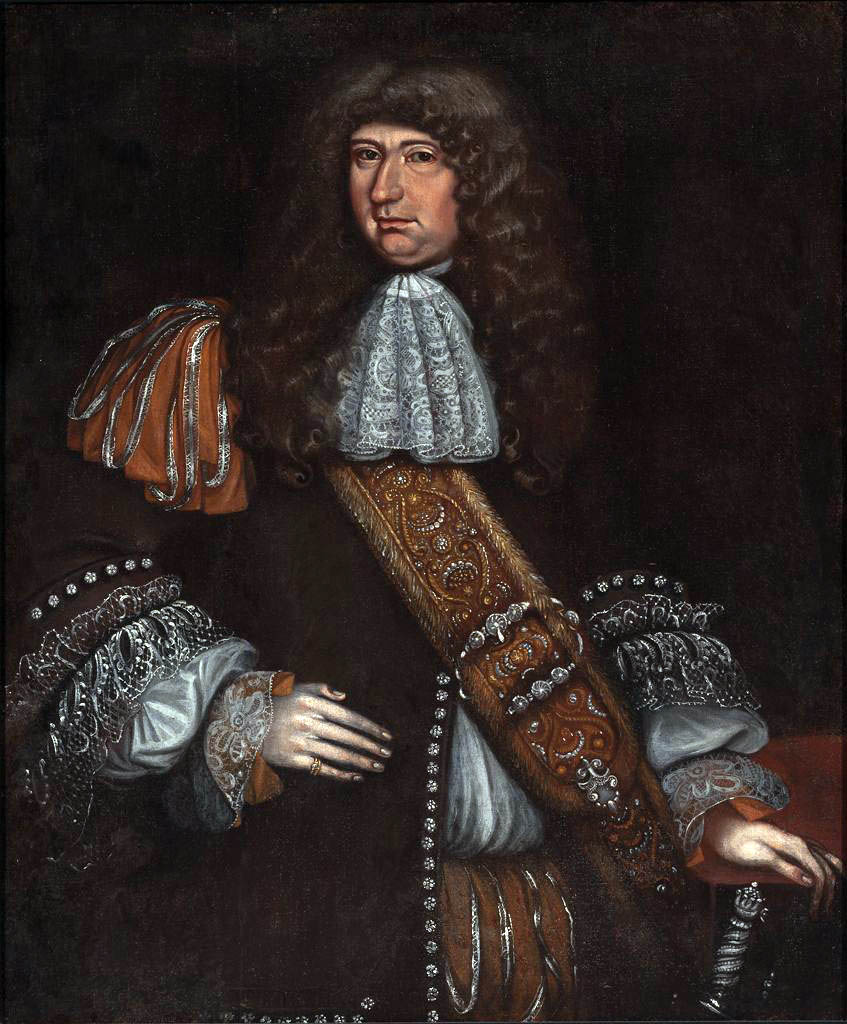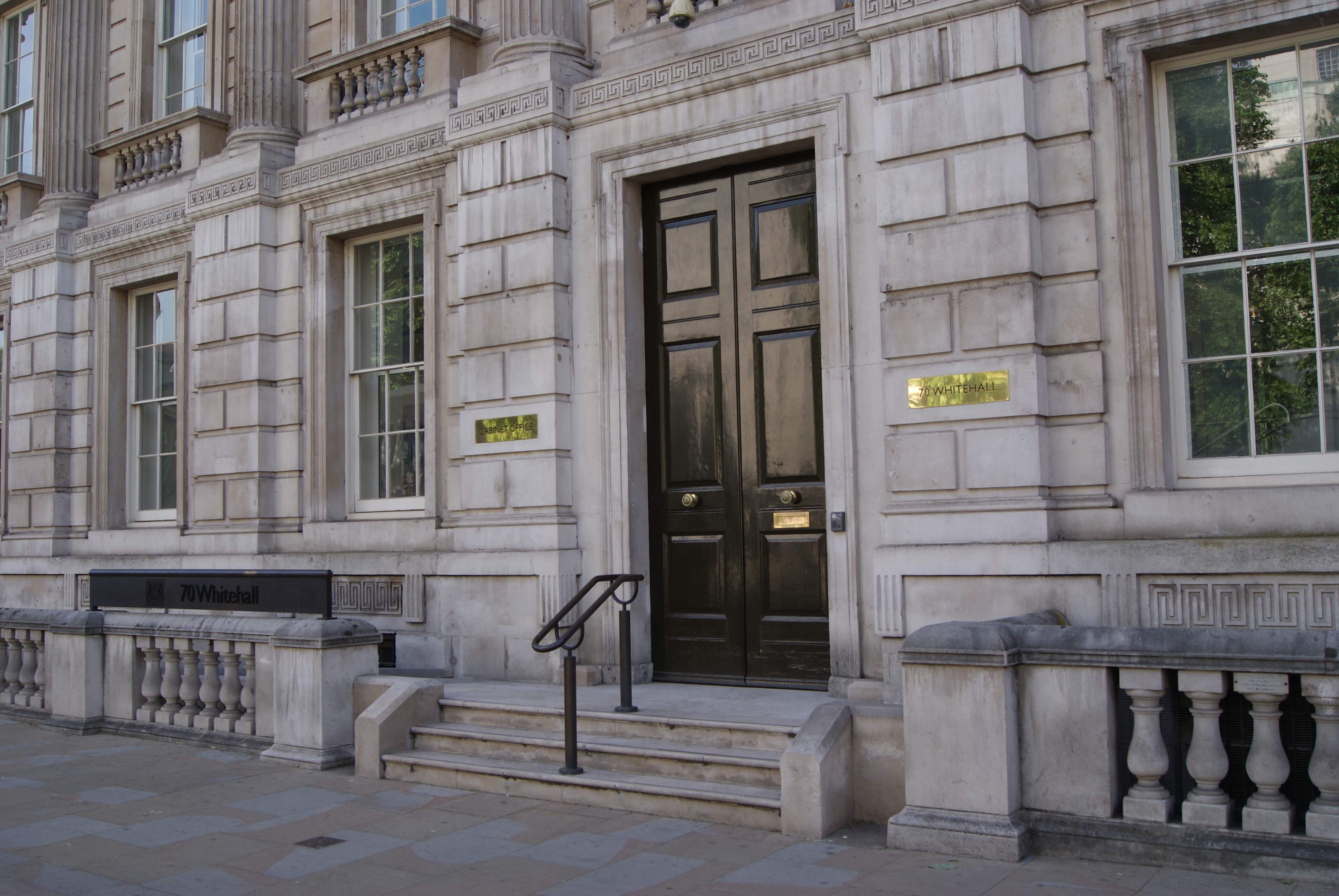|
Whitehall
Whitehall is a road and area in the City of Westminster, Central London. The road forms the first part of the A3212 road from Trafalgar Square to Chelsea. It is the main thoroughfare running south from Trafalgar Square towards Parliament Square. The street is recognised as the centre of the Government of the United Kingdom and is lined with numerous departments and ministries, including the Ministry of Defence, Horse Guards and the Cabinet Office. Consequently, the name "Whitehall" is used as a metonym for the British civil service and government, and as the geographic name for the surrounding area. The name was taken from the Palace of Whitehall that was the residence of Kings Henry VIII through to William III, before its destruction by fire in 1698; only the Banqueting House has survived. Whitehall was originally a wide road that led to the front of the palace; the route to the south was widened in the 18th century following the destruction of the palace. As well as ... [...More Info...] [...Related Items...] OR: [Wikipedia] [Google] [Baidu] |
Palace Of Whitehall
The Palace of Whitehall (also spelt White Hall) at Westminster was the main residence of the English monarchs from 1530 until 1698, when most of its structures, except notably Inigo Jones's Banqueting House of 1622, were destroyed by fire. Henry VIII moved the royal residence to White Hall after the old royal apartments at the nearby Palace of Westminster were themselves destroyed by fire. Although the Whitehall palace has not survived, the area where it was located is still called Whitehall and has remained a centre of government. White Hall was at one time the largest palace in Europe, with more than 1,500 rooms, overtaking the Vatican, before itself being overtaken by the expanding Palace of Versailles, which was to reach 2,400 rooms. The palace gives its name, Whitehall, to the street located on the site on which many of the current administrative buildings of the present-day British government are situated, and hence metonymically to the central government itse ... [...More Info...] [...Related Items...] OR: [Wikipedia] [Google] [Baidu] |
The Cenotaph, Whitehall
The Cenotaph is a war memorial on Whitehall in London, England. Designed by Sir Edwin Lutyens, it was unveiled in 1920 as the United Kingdom's national memorial to the British and Commonwealth dead of the First World War, was rededicated in 1946 to include those of the Second World War, and has since come to represent British casualties from later conflicts. The word ''cenotaph'' is derived from Greek, meaning 'empty tomb'. Most of the dead were buried close to where they fell; thus, the Cenotaph symbolises their absence and is a focal point for public mourning. The original temporary Cenotaph was erected in 1919 for a parade celebrating the end of the First World War, at which more than 15,000 servicemen, including French and American soldiers, saluted the monument. More than a million people visited the site within a week of the parade. Calls for the Cenotaph to be rebuilt in permanent form began almost immediately. After some debate, the government agreed and construction wo ... [...More Info...] [...Related Items...] OR: [Wikipedia] [Google] [Baidu] |
Banqueting House, Whitehall
The Banqueting House, Whitehall, is the grandest and best known survivor of the architectural genre of banqueting houses, constructed for elaborate entertaining. It is the only remaining component of the Palace of Whitehall, the residence of English monarchs from 1530 to 1698. The building is important in the history of English architecture as the first structure to be completed in the neo-classical style, which was to transform English architecture. Begun in 1619 and designed by Inigo Jones in a style influenced by Andrea Palladio, the Banqueting House was completed in 1622 at a cost of £15,618, 27 years before King Charles I of England was beheaded on a scaffold in front of it in January 1649. The building was controversially re-faced in Portland stone in the 19th century, though the details of the original façade were faithfully preserved. Today, the Banqueting House is a national monument, open to the public and preserved as a Grade I listed building. It is cared for b ... [...More Info...] [...Related Items...] OR: [Wikipedia] [Google] [Baidu] |
Trafalgar Studios
Trafalgar Theatre is a new West End theatre in Whitehall, near Trafalgar Square, in the City of Westminster, London. It is set to open in spring 2021 following a major multi-million pound restoration project aiming to reinstate it back to its original heritage design. The Grade II listed building was built in 1930 with interiors in the Art Deco style as the Whitehall Theatre; it regularly staged comedies and revues. It was converted into a television and radio studio in the 1990s, before returning to theatrical use in 2004 as Trafalgar Studios, the name it bore until 2020. History 1930 to 1996 The original Whitehall Theatre, built on the site of the 17th century ''Ye Old Ship Tavern'' was designed by Edward A. Stone, with interiors in the Art Deco style by Marc-Henri and Laverdet. It had 634 seats. The theatre opened on 29 September 1930 with ''The Way to Treat a Woman'' by Walter Hackett, who was the theatre's licensee. In November 1933 Henry Daniell appeared there as Portman ... [...More Info...] [...Related Items...] OR: [Wikipedia] [Google] [Baidu] |
Whitehall Farce
The Whitehall farces were a series of five long-running comic stage plays at the Whitehall Theatre in London, presented by the actor-manager Brian Rix, in the 1950s and 1960s. They were in the low comedy tradition of British farce, following the Aldwych farces, which played at the Aldwych Theatre between 1924 and 1933. History The farces; critical reception The five farces were as follows: Rix built a company of regular players who appeared in some or all of these shows. They included Leo Franklyn, Larry Noble, Dennis Ramsden and Derek Royle, and members of Rix's family: his wife, Elspet Gray, his sister, Sheila Mercier and his brother-in-law, Peter Mercier. Others who appeared in one or more of the Whitehall farces include Terry Scott and Andrew Sachs. Rix starred in all five plays, in a range of roles: a "gormless recruit" to the army in ''Reluctant Heroes''; a timidly crooked bookie's runner in ''Dry Rot''; a street musician recruited as a secret agent in ''Simple Spym ... [...More Info...] [...Related Items...] OR: [Wikipedia] [Google] [Baidu] |
Horse Guards (building)
Horse Guards is a historic building in the City of Westminster, London, between Whitehall and Horse Guards Parade. It was built in the mid-18th century, replacing an earlier building, as a barracks and stables for the Household Cavalry. It was, between the early 18th century and 1858, the main military headquarters for the British Empire. Horse Guards originally formed the entrance to the Palace of Whitehall and later St James's Palace; for that reason it is still ceremonially defended by the King's Life Guard. Although still in military use, part of the building houses the Household Cavalry Museum which is open to the public. It also functions as a gateway between Whitehall and St James's Park. History The first Horse Guards building was commissioned by King Charles II in 1663,Tabor, p.18 on the site of a cavalry stables which had been built on the tiltyard of the Palace of Whitehall during the Commonwealth. Built of red brick and costing some £4,000, it comprised a cent ... [...More Info...] [...Related Items...] OR: [Wikipedia] [Google] [Baidu] |
Charing Cross Tube Station
Charing Cross (sometimes informally abbreviated as Charing +, Charing X, CHX or CH+) is a London Underground station at Charing Cross in the City of Westminster. The station is served by the Bakerloo and Northern lines and provides an interchange with Charing Cross mainline station. On the Bakerloo line it is between Embankment and Piccadilly Circus stations and on the Northern line it is between Embankment and Leicester Square stations. The station is in fare zone 1. Charing Cross was originally two separate stations, known for most of their existence as Trafalgar Square (on the Bakerloo line) and Strand (on the Northern line). The Bakerloo line platforms were opened by the Baker Street and Waterloo Railway in 1906 and the Northern line platforms by the Charing Cross, Euston and Hampstead Railway in 1907. In the 1970s, in preparation for the opening of the Jubilee line, the two earlier stations were connected together with new below ground passageways. When the Jubilee ... [...More Info...] [...Related Items...] OR: [Wikipedia] [Google] [Baidu] |
Downing Street
Downing Street is a street in Westminster in London that houses the official residences and offices of the Prime Minister of the United Kingdom and the Chancellor of the Exchequer. Situated off Whitehall, it is long, and a few minutes' walk from the Houses of Parliament. Downing Street was built in the 1680s by Sir George Downing. For more than three hundred years, it has held the official residences of both the First Lord of the Treasury, the office now synonymous with that of the Prime Minister, and the Second Lord of the Treasury, the office held by the Chancellor of the Exchequer. The Prime Minister's official residence is 10 Downing Street, and the Chancellor's official residence is Number 11. The government's Chief Whip has an official residence at Number 12. In practice, these office-holders may live in different flats; the current Chief Whip actually lives at Number 9. The houses on the south side of the street were demolished in the 19th century to make way for go ... [...More Info...] [...Related Items...] OR: [Wikipedia] [Google] [Baidu] |
Cabinet Office
The Cabinet Office is a department of His Majesty's Government responsible for supporting the prime minister and Cabinet. It is composed of various units that support Cabinet committees and which co-ordinate the delivery of government objectives via other departments. As of December 2021, it has over 10,200 staff, most of whom are civil servants, some of whom work in Whitehall. Staff working in the Prime Minister's Office are part of the Cabinet Office. Responsibilities The Cabinet Office's core functions are: * Supporting collective government, helping to ensure the effective development, coordination and implementation of policy; * Supporting the National Security Council and the Joint Intelligence Organisation, coordinating the government's response to crises and managing the UK's cyber security; * Promoting efficiency and reform across government through innovation, transparency, better procurement and project management, by transforming the delivery of services, and i ... [...More Info...] [...Related Items...] OR: [Wikipedia] [Google] [Baidu] |
War Office
The War Office was a department of the British Government responsible for the administration of the British Army between 1857 and 1964, when its functions were transferred to the new Ministry of Defence (MoD). This article contains text from this source, which is available under th Open Government Licence v3.0 © Crown copyright It was equivalent to the Admiralty, responsible for the Royal Navy (RN), and (much later) the Air Ministry, which oversaw the Royal Air Force (RAF). The name 'War Office' is also given to the former home of the department, located at the junction of Horse Guards Avenue Horse Guards Avenue is a road in the City of Westminster, London, linking the major thoroughfares of Whitehall and Victoria Embankment, to the east of the Horse Guards building and parade area. The entrance of the Main Building of the Minist ... and Whitehall in central London. The landmark building was sold on 1 March 2016 by HM Government for more than British pound, £3 ... [...More Info...] [...Related Items...] OR: [Wikipedia] [Google] [Baidu] |
Monument To The Women Of World War II
The Monument to the Women of World War II is a British national war memorial situated on Whitehall in London, to the north of the Cenotaph. It was first thought of and funded by Peri Langdale, sculpted by John W. Mills, unveiled by Queen Elizabeth II and dedicated by Baroness Boothroyd in July 2005. Fundraising was conducted by a charitable trust set up for the purpose of establishing a memorial, with the National Heritage Memorial Fund donating towards the project. Baroness Boothroyd also raised money on the game show ''Who Wants to Be a Millionaire?''. Origins The idea for a memorial was raised with retired Major David Mcnally Robertson in 1997, who was informed that, while many countries had a national monument to the work that women undertook during World War Two, the UK did not. Previous campaigns had only been limited to attempting to generate funds for a plaque in York Minster with Robertson, and former gunners Edna Storr and Mildred Veal leading the campaign. They found ... [...More Info...] [...Related Items...] OR: [Wikipedia] [Google] [Baidu] |
Henry VIII Of England
Henry VIII (28 June 149128 January 1547) was King of England from 22 April 1509 until his death in 1547. Henry is best known for his six marriages, and for his efforts to have his first marriage (to Catherine of Aragon) annulled. His disagreement with Pope Clement VII about such an annulment led Henry to initiate the English Reformation, separating the Church of England from papal authority. He appointed himself Supreme Head of the Church of England and dissolved convents and monasteries, for which he was excommunicated by the pope. Henry is also known as "the father of the Royal Navy" as he invested heavily in the navy and increased its size from a few to more than 50 ships, and established the Navy Board. Domestically, Henry is known for his radical changes to the English Constitution, ushering in the theory of the divine right of kings in opposition to papal supremacy. He also greatly expanded royal power during his reign. He frequently used charges of treason a ... [...More Info...] [...Related Items...] OR: [Wikipedia] [Google] [Baidu] |











.jpg)
